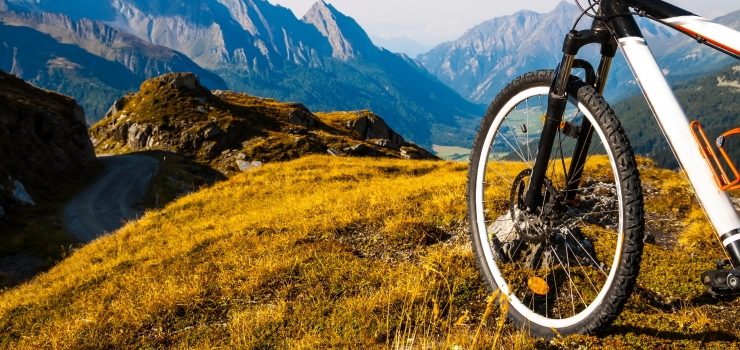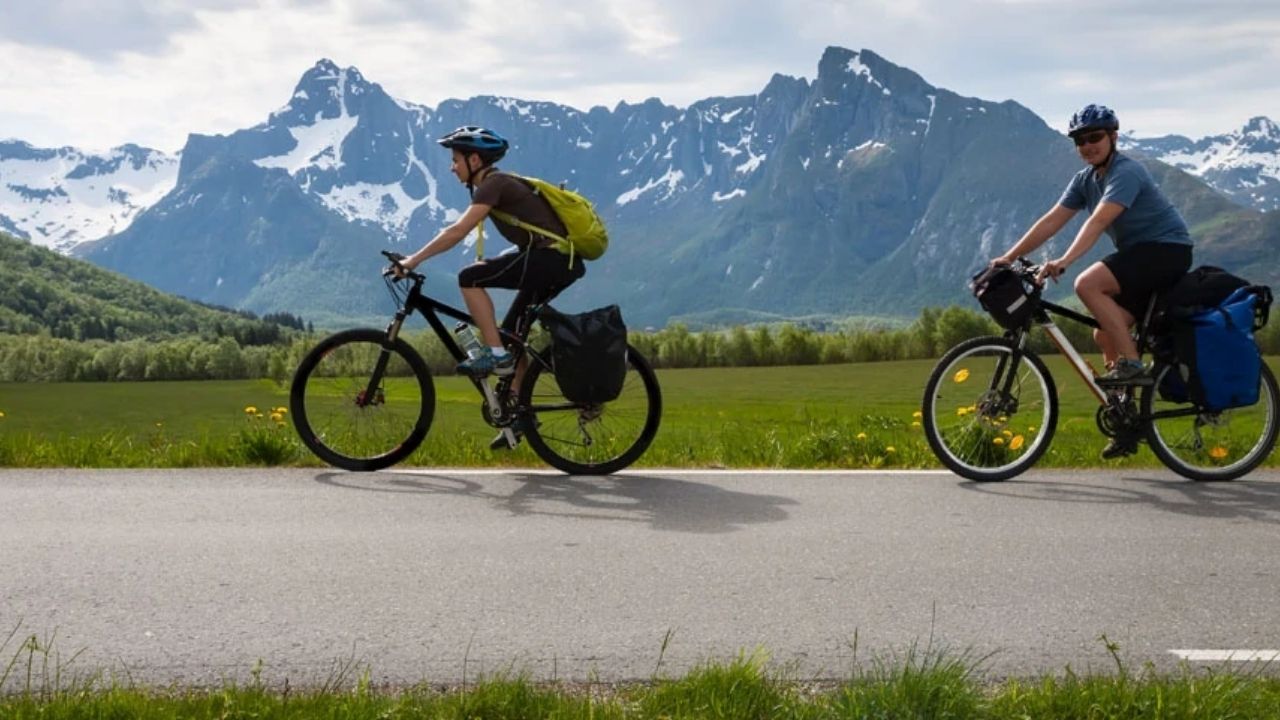Are mountain bikes suitable for road use? Mountain bikes can be ridden along roads, but they will be less efficient than a road bike. There are a few changes that you can implement to make your mountain bike more efficient for on-road riding. Read on, and we will guide you through these choices.
I am going to presume in this article that you already have a mountain bike and want to use it on the road. If you are thinking of purchasing a bike and were wondering if a mountain bike would make a good bike for riding on the road, then perhaps re-evaluate your choice.
Think about your riding and where you will be doing it. If it is all road look at buying a road bike or a hybrid, as that is where these bikes are designed to be ridden. You could also go to your local bike shop and try out some bikes on your local roads and see what suits you best.
Page Contents
Hardtail or Full Suspension?

Is your mountain bike a hardtail mountain bike or a full suspension mountain bike? If you have a full suspension bike, have a look at your rear shock. Does it have a switch to lock it out? If so, you want to lock your shock out for on-road riding. You will now want to look at your suspension fork and see if it locks out. This also goes for hardtail bikes – lock your suspension out.
If your mtb has Fox suspension, it will more likely have a CTD switch. CTD stands for Climb, Trail, Descend. The Climb setting is the most similar to a lock out setting so select that.
Whether you have used Climb or locked out your suspension, it will still have a small amount of travel. The small amount of travel is to make sure that your suspension does not get blown out by hitting an unexpected hole or boulder.
Go Rigid
With a hardtail, you could take this a step further. You could swap out your suspension fork for a rigid fork. You could get a steel fork that will allow you to add racks to the front of your bike, turning it into a super comfortable commuter that you could stop on your way home for a bit of shopping.
You could also lighten your bike and go for a carbon fibre fork. This makes those hills seem a little smaller while still offering you dampening from road buzz.
If you decide to go for a new fork to replace a suspension fork, make sure you get a suspension corrected fork. Your bike will have been designed to work with a certain amount of travel, and your new fork needs to replicate this. A similar axle to crown measurement will make sure your bike handles the same as it did with a suspension fork.
You will also save yourself a good bit of money in the long run with rigid forks. You will not need to service your forks, as they have no moving parts. You will also find that during winter, your rigid forks will not rust like the stations on your forks can because of road salt hitting them. It also means you will not have your bike off the road when your forks are away getting serviced.
Feeling Tired?

After locking out forks the next change to make is your tires. You do not need to run low offroad pressures on your tires. Pumping them up to near their maximum limit will make your tire roll better along the road. You might hear a strange humming if you this. The humming noise is the knobs on your tires brushing the road. If you want to get rid of that humming and possibly gain a little speed, buy some new tires.
You can buy mountain bike tires in a variety of treads. All of these treads are designed to work in a particular environment.
What you need to buy is a set of commuter tires. These will look pretty smooth compared to your offroad tires, but they will significantly reduce rolling resistance. You should now be rid of that humming sound, and you’ll also notice a change in your speed.
You can get tires that have a smooth tread. It will look like a file in the middle with knobs at the side. These are great if you still want to go offroad on your mountain bike occasionally. The file tread will roll fast when pumped up on roads, and the knobs will bite into trails when you corner — a perfect meeting of both worlds.
Get Geared Up
These are all pretty simple steps. Some will be free, and others cost a bit more, but they will help you ride your mountain bike on the road.
There is one more change that is slightly harder to make, but if you will be riding on the road all the time it is a good one to try: run some bigger gears.
By bigger gears, I mean harder gears. You want to do this as riding on the road is easier than riding offroad. Mountain bike gearing is low to allow you to traverse rocky terrain and to do so slowly. By changing your gearing, you can make sure you are riding more efficiently along roads.
Too low a gear can be just as bad as having to ride too high a gear. You might see that your mountain bike has mainly low gears and not enough high gears.
By not having evenly spaced high gears, you will find that you are not able to keep a nice rhythm or tempo as you ride on the road. To fix this, you will want to experiment with cassette ratios. By trying different cassettes, you will be able to fine-tune your gears to where you need them. By sticking to an even tempo riding along roads, you will find that it’s a bit easier and you enjoy it a little more.
Now you can see that riding a mountain bike on the road is entirely possible, and that there are also a few tips to help make it easier on yourself. So get on your bike, get out there, and ride down all the roads you want to.
